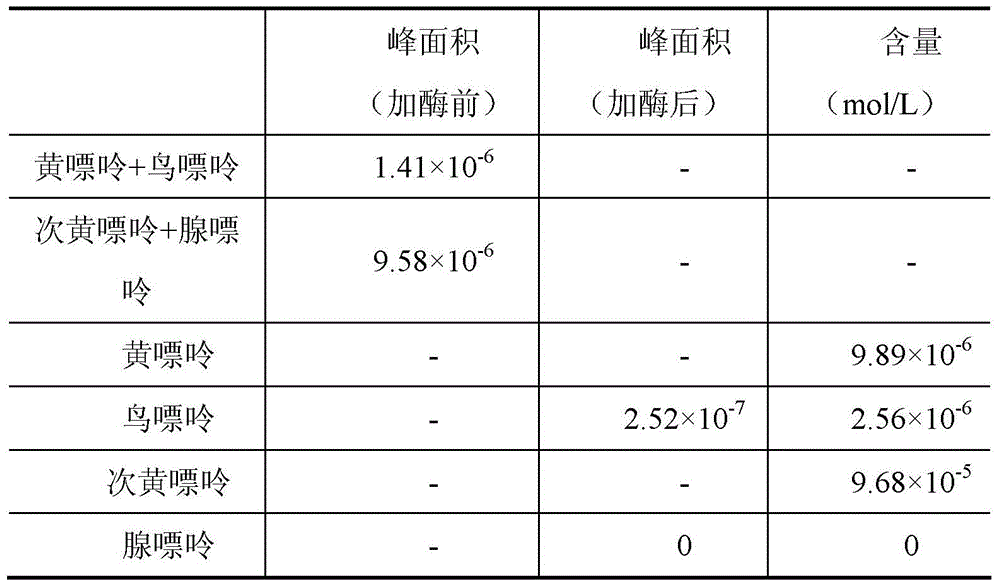An electrochemical detection method of intracellular purine based on enzyme catalysis
A detection method and electrochemical technology, applied in the field of detection of purine bases in cells, can solve problems such as the inability to obtain purine elemental content, and achieve the effect of improving accuracy
- Summary
- Abstract
- Description
- Claims
- Application Information
AI Technical Summary
Problems solved by technology
Method used
Image
Examples
specific Embodiment approach 1
[0024] Embodiment 1: In this embodiment, an enzyme-catalyzed intracellular purine electrochemical detection method is implemented according to the following steps:
[0025] 1. Drawing of standard curve
[0026] Configure the standard to a concentration of 5×10 -6 mol / L~15×10 -6 mol / L solution to obtain a standard solution, use an electrochemical detector to detect the electrochemical signal peak of the standard solution, obtain the peak area of the standard through analysis, and draw the standard curve;
[0027] The standard substance described in step 1 is guanine, hypoxanthine, adenine, xanthine or xanthine oxidase;
[0028] The standard curve described in step 1 takes the electrochemical signal peak area of the standard as the ordinate, and the concentration of the standard as the abscissa;
[0029] Second, the secondary electrochemical detection of the lysate
[0030] ①, to contain 3 × 10 5 pcs / dish~5×10 5 Add 500 μL of PBS buffer solution to a 60 mm culture dish...
specific Embodiment approach 2
[0039] Embodiment 2: The difference between this embodiment and Embodiment 1 is that the electrochemical detector described in step 1 is an electrochemical detector with a three-electrode system. Other parameters are the same as in the first embodiment.
specific Embodiment approach 3
[0040] Embodiment 3: The difference between this embodiment and Embodiment 1 or 2 is that the three-electrode system described in step 1 is that the ionic liquid / multi-walled carbon modified electrode is used as the working electrode, and silver / silver chloride is used as the reference electrode. The ratio electrode and platinum wire are the opposite poles. Other parameters are the same as those in Embodiment 1 or Embodiment 2.
PUM
 Login to View More
Login to View More Abstract
Description
Claims
Application Information
 Login to View More
Login to View More - R&D
- Intellectual Property
- Life Sciences
- Materials
- Tech Scout
- Unparalleled Data Quality
- Higher Quality Content
- 60% Fewer Hallucinations
Browse by: Latest US Patents, China's latest patents, Technical Efficacy Thesaurus, Application Domain, Technology Topic, Popular Technical Reports.
© 2025 PatSnap. All rights reserved.Legal|Privacy policy|Modern Slavery Act Transparency Statement|Sitemap|About US| Contact US: help@patsnap.com


